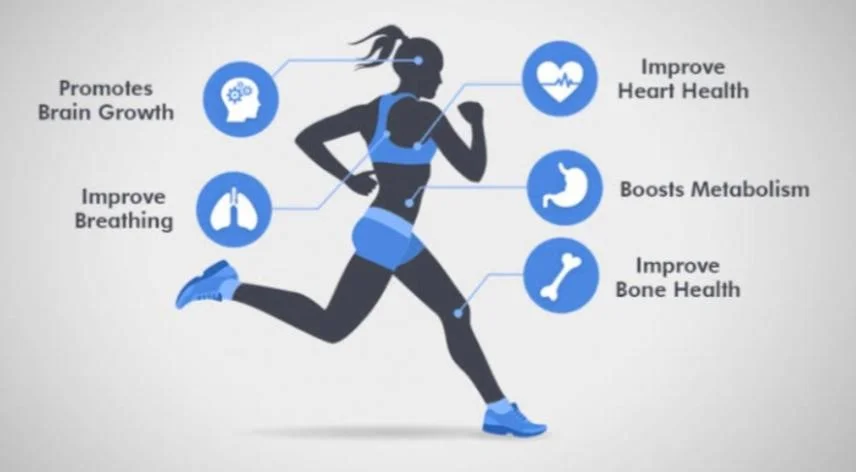What Is Cardiovascular Fitness?
Cardiovascular fitness refers to the efficiency with which your heart, lungs, and blood vessels deliver oxygen-rich blood to your muscles during physical activity. It is often a key indicator of overall fitness and health. The higher your cardiovascular fitness level, the better your body is at performing aerobic activities like running, swimming, or cycling, and the more efficiently it can manage long-term physical stress.
The Cardiovascular System
The cardiovascular system is made up of your heart, blood vessels, and lungs. These organs work together to pump blood, transport oxygen, and remove waste from the body. When you engage in cardiovascular exercise, your heart rate increases, and your blood vessels expand to meet the higher demand for oxygen. This type of exercise strengthens your heart and improves the health of your circulatory system.
Benefits of Cardiovascular Fitness
Cardiovascular fitness goes far beyond just helping you run faster or swim longer. It has numerous benefits for both your body and mind. Let’s dive into some of the major advantages:
Enhancing Heart Health
One of the most significant benefits of cardiovascular fitness is its positive impact on heart health. Regular aerobic exercise strengthens the heart muscle, improving its efficiency in pumping blood and lowering the risk of heart disease. Cardiovascular exercise also helps regulate blood pressure, reduce cholesterol levels, and prevent the buildup of fatty deposits in the arteries.
Weight Management and Fat Loss
Cardiovascular fitness plays a key role in weight management and fat loss. Engaging in regular aerobic exercise burns calories, helping to create a calorie deficit that is essential for weight loss. Additionally, cardiovascular exercises improve metabolism and fat oxidation, making it easier to maintain a healthy weight over time.
Mental Health and Mood Improvement
The mental health benefits of cardiovascular fitness are just as important as the physical ones. Regular cardiovascular exercise releases endorphins, the body’s natural mood enhancers. It reduces feelings of stress, anxiety, and depression while improving cognitive function. Additionally, cardiovascular exercise can help combat insomnia by promoting better sleep quality.
Boosting Stamina and Endurance
One of the most noticeable results of cardiovascular fitness is the improvement in stamina and endurance. As your cardiovascular system becomes stronger, your ability to perform physical activities for extended periods improves. Whether it’s running, hiking, or cycling, cardiovascular fitness helps you go the distance, build stamina, and avoid fatigue during intense activities.
Types of Cardiovascular Exercises
Cardiovascular exercises come in all shapes and sizes, and there’s something for everyone. Here are some of the most popular forms of cardio workouts:
Running and Jogging
Running and jogging are classic cardiovascular exercises that require little more than a good pair of shoes. These activities help build endurance, improve heart health, and burn calories. Whether you’re running on a treadmill or jogging outdoors, the simplicity and effectiveness of this exercise make it a go-to option for many.
Cycling
Cycling is another excellent form of cardiovascular exercise, whether done indoors on a stationary bike or outdoors on a road or mountain bike. It improves cardiovascular health, tones the legs, and burns calories. Cycling is also a low-impact exercise, making it gentle on the joints while still delivering great results.
Swimming
Swimming is a full-body workout that provides excellent cardiovascular benefits. It is particularly beneficial for people with joint problems or those looking for a low-impact alternative to running. Swimming improves lung capacity, heart health, and flexibility while offering a fun and relaxing way to stay fit.
Walking and Hiking
If you’re just starting on your fitness journey, walking is an accessible and low-impact way to improve Visit Komrod for more. Walking regularly can reduce your risk of heart disease, help manage weight, and increase your stamina. Hiking, particularly on varied terrains, is another great option that engages different muscles and challenges the heart.
Rowing
Rowing offers a total-body workout and is an effective cardiovascular exercise that targets both upper and lower body muscles. It’s a great option for those looking for a low-impact but challenging cardio workout. Rowing can be done in a gym on rowing machines or on the water, and it’s an excellent way to improve heart health and build endurance.
How to Build Cardiovascular Fitness
Building cardiovascular fitness doesn’t require fancy equipment or extreme workouts. Here’s how you can start building a stronger heart and lungs:
Starting Slow and Progressing Gradually
If you’re new to cardiovascular exercise, it’s important to start slowly and gradually increase the intensity and duration. Begin with shorter sessions (20-30 minutes) and lower-intensity exercises, and as your fitness level improves, gradually increase the duration and intensity of your workouts. This will help you avoid burnout and injury.
Consistency Is Key
The key to improving cardiovascular fitness is consistency. Aim to engage in at least 150 minutes of moderate-intensity aerobic activity per week, or 75 minutes of vigorous-intensity activity. Consistent workouts help build endurance and provide long-term cardiovascular health benefits.
Monitoring Heart Rate
Using your heart rate as a guide during exercise can help you monitor your intensity and ensure you’re working within your target heart rate zone. Your target heart rate is typically 50-85% of your maximum heart rate, which can be calculated by subtracting your age from 220. Tracking your heart rate during exercise can help you stay in the right zone for improving cardiovascular fitness.
Cardiovascular Fitness for Different Age Groups
Cardiovascular fitness is essential at every stage of life. However, the way you approach cardio exercises may change as you age. Here’s how cardiovascular fitness applies to different age groups:
Cardiovascular Fitness for Teens
For teenagers, cardiovascular exercise is a great way to build healthy habits early in life. It helps with overall physical development, including improving heart health, building muscle, and supporting bone density. Teenagers should aim for at least 1 hour of moderate to vigorous physical activity each day.
Cardiovascular Fitness for Adults
Adults benefit from cardiovascular exercise by reducing their risk of chronic conditions like heart disease, diabetes, and obesity. Regular cardio also helps manage stress, improve sleep, and increase energy levels. As an adult, it’s important to find activities you enjoy so that staying active remains sustainable in the long term.
Cardiovascular Fitness for Seniors
For seniors, cardiovascular exercise is essential for maintaining heart health, mobility, and independence. It can also help reduce the risk of age-related conditions such as osteoporosis and hypertension. Seniors should focus on low-impact exercises like walking, swimming, or cycling to ensure they get enough cardio while avoiding excessive strain on the joints.
Common Mistakes to Avoid
While building cardiovascular fitness, it’s important to avoid certain mistakes that could hinder your progress or lead to injury:
Overtraining
Overtraining is one of the biggest mistakes people make when working to improve cardiovascular fitness. It’s important to allow your body time to recover between intense workouts. Too much exercise without proper rest can lead to burnout, fatigue, and even injury.
Ignoring Rest and Recovery
Rest is just as important as exercise in a cardiovascular fitness routine. Taking rest days allows your heart and muscles to recover and rebuild. Skipping rest can lead to overuse injuries, reduced performance, and fatigue.
Conclusion
Cardiovascular fitness is crucial for maintaining good health throughout life. Whether you’re trying to improve heart health, manage weight, boost your mood, or increase endurance, engaging in regular cardiovascular exercise is one of the most effective ways to achieve your goals. Stay consistent, choose activities you enjoy, and monitor your progress to keep your heart and body in top shape.





